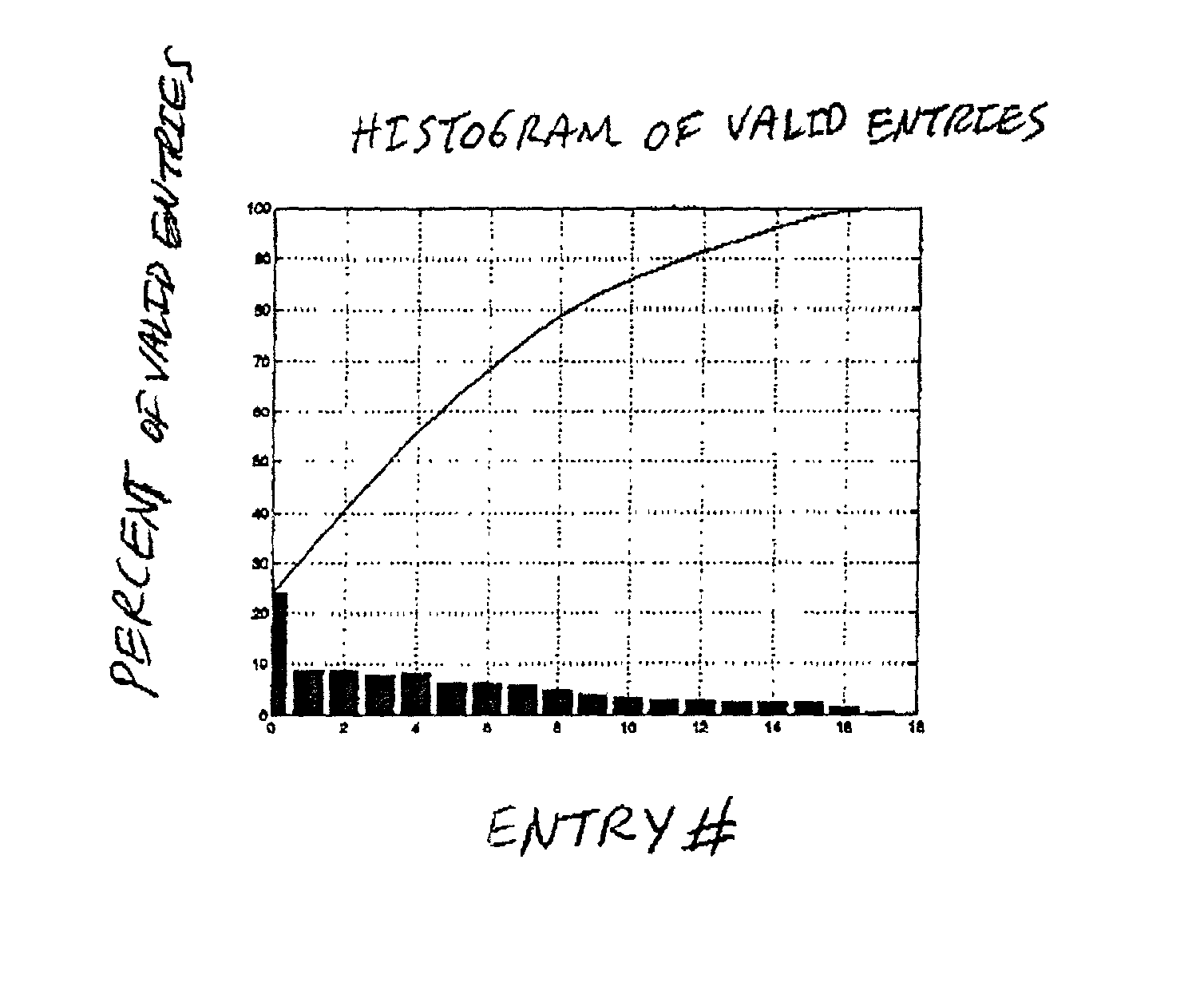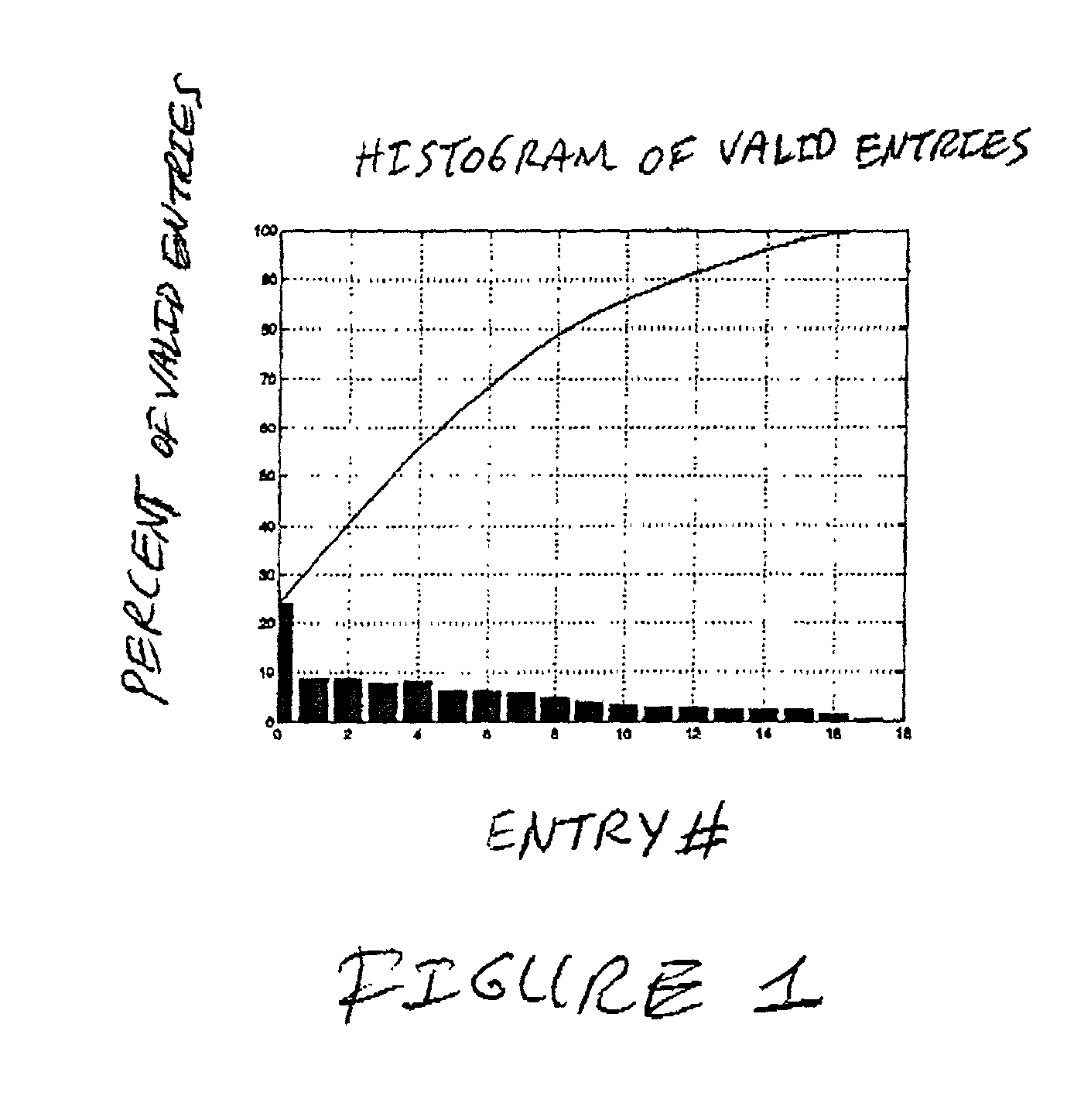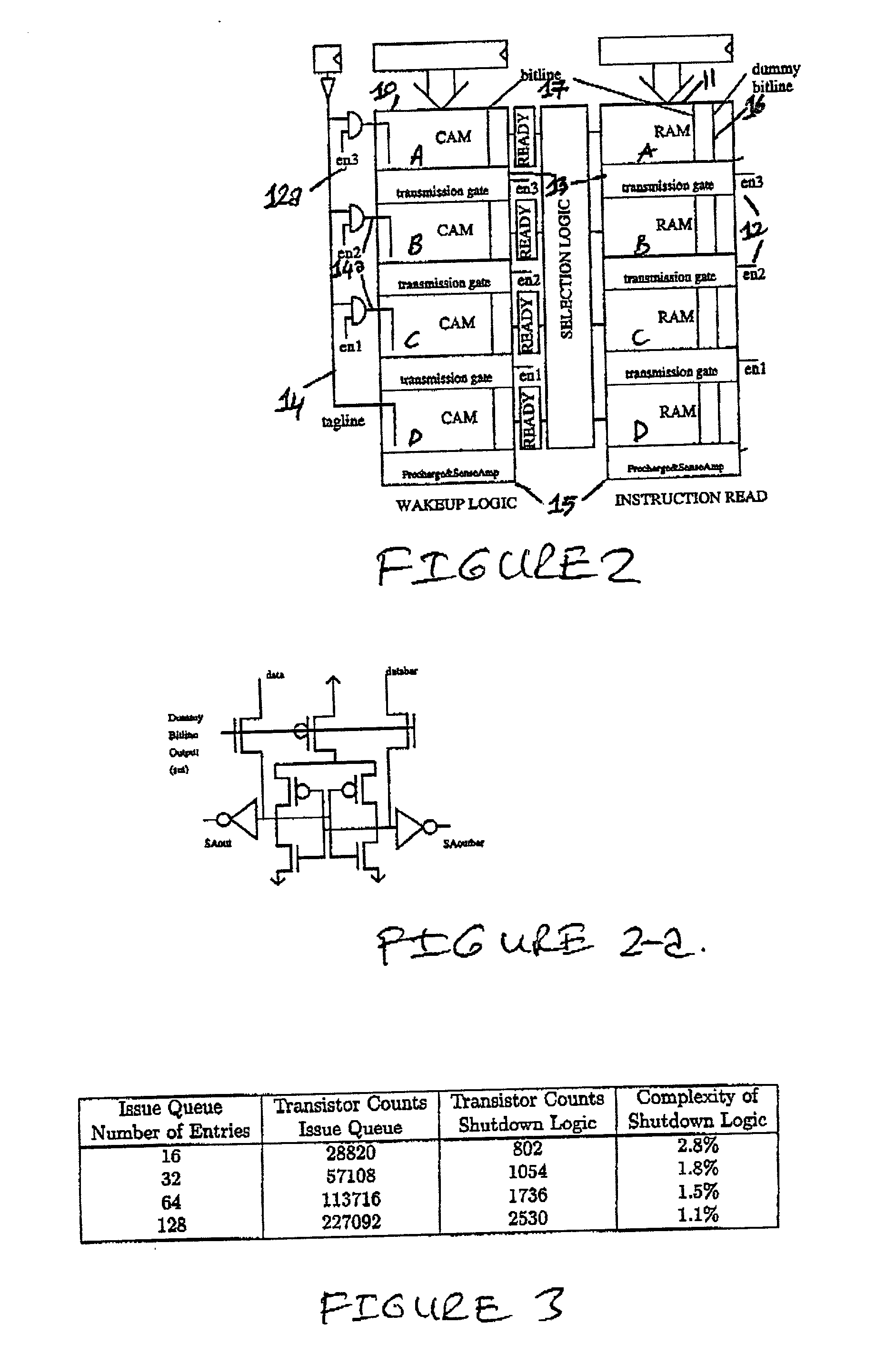Adaptive issue queue for reduced power at high performance
- Summary
- Abstract
- Description
- Claims
- Application Information
AI Technical Summary
Benefits of technology
Problems solved by technology
Method used
Image
Examples
Embodiment Construction
[0061] Many superscalar microprocessors, such as the Alpha 21264.TM. and Mips R10000.TM., use a distributed issue queue structure, which may include separate queues for integer and floating point operations. For instance in the Alpha 21264.TM., the issue queue is implemented as flip-flop latch-based FIFO queues with a "compaction" strategy. That is, with every cycle the instructions in the queue are shifted to fill up any "holes" created due to prior-cycle issues. This makes efficient use of the queue resource, while also simplifying the wake-up and selection control logic. However, compaction entails shifting instructions around in the queue every cycle and, depending on the instruction word width, may therefore be a source of considerable power consumption. Studies have shown that overall performance is largely independent of what selection policy is used (oldest first, position based, etc.). As such, the compaction strategy may not be best suited for low power operation, nor is i...
PUM
 Login to View More
Login to View More Abstract
Description
Claims
Application Information
 Login to View More
Login to View More - R&D
- Intellectual Property
- Life Sciences
- Materials
- Tech Scout
- Unparalleled Data Quality
- Higher Quality Content
- 60% Fewer Hallucinations
Browse by: Latest US Patents, China's latest patents, Technical Efficacy Thesaurus, Application Domain, Technology Topic, Popular Technical Reports.
© 2025 PatSnap. All rights reserved.Legal|Privacy policy|Modern Slavery Act Transparency Statement|Sitemap|About US| Contact US: help@patsnap.com



